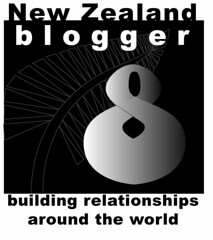 By Josephine Latu: Pacific Media Watch
By Josephine Latu: Pacific Media WatchThe New Zealand media is expected to tackle some major changes over their audience base within the next 20 years due to a population transformation, says a leading demographer.
The director of the Population Studies Centre at Waikato University, Professor Richard Bedford, says the New Zealand population as a whole is not only growing older, it is evolving quickly in terms of ethnic diversity.
In fact, by the year 2021, current statistical projections show that the Asian population will have increased by more than 70 percent, the Pacific Islander population by 44 percent, and the Māori population by about 24 percent since 2006.

New Zealanders of European or “other” ethnic backgrounds (including from African and South American and other nations) are altogether predicted to increase by just below 6 percent in the same timeframe.
The number of people aged over 35 is also set to swell for all ethnic groups. Figures showed that between 2006 and 2021, those aged 35 and over will increase by 22 percent, compared to only about 5 percent for those under 35.
Professor Bedford presented his seminar as part of today’s forum on ethnic diversity in broadcasting, hosted by NZ On Air in association with the Office of Ethnic Affairs.
Titled “Screen and Heard, New Zealand Broadcast Audiences in 2020”, the event brought together decision-makers and leaders from various broadcasting backgrounds – including regional, mainstream and indigenous media - to discuss how the country’s changing demography will be served and represented on TV and radio.
Speakers included Minister of Ethnic Affairs Pansy Wong; managing director of Australia’s Special Broadcasting Service Shaun Brown; ethnic and English network manager from the BBC World Service, Murray Holgate; and Triangle TV chief executive Jim Blackman.
Professor Bedford added that despite the increase in ethnic diversity, “the reality of New Zealand’s population dynamics is that… the great majority is going to be older Pākehā descent people.”
At the same time, trends varied greatly by area and ethnic group. For instance, Dunedin and Hamilton had a disproportionately large population in their late teens and early 20s, reflecting the effect of universities.
Pacific Islander and Māori populations were also predicted to have a much younger population in 2021 than other groups.
'Finding the balance'
“The challenge [for media] is finding the balance in meeting the needs of these different communities,” he said.
Associate director of programming for TV3 Andrew Szusterman commented on the changing trends in demography, saying that as broadcasters, the media industry had to appeal to the broadest audience and reflect popular demand.
“We try to represent the populace – it’s about being with them at the same stage,” he told Pacific Media Watch.
According to Szusterman, TV3’s target demographic was mainly 18-49 year olds, and popular shows such as Outrageous Fortune, Target and Moneyman appealed to such a broad age group.
However, the commercial focus of the mainstream trade also meant that some ethnically based shows such as bro’Town and A Thousand Apologies would not have succeeded even five years ago because there was too little demand.
This had since changed.
“[Commercialism] is not a criticism, but an actuality of mainstream media,” added Szusterman.
'Coffee-colour' mix
Meanwhile, regional broadcaster Triangle Stratos chief executive Jim Blackman saw the profit-driven element as a threat to diversity.
“As long as you have a commercial imperative, you’ll never see true representation – just lip service,” he said.
He called for more multicultural representation on a mix of programmes to reflect New Zealand’s “coffee colour”.

The latest edition of Pacific Journalism Review with the cover theme “Diversity, identity and the media”, published by the Pacific Media Centre, was also launched at the conference.
NZ Human Rights Commission principle adviser on race relations Samuela Sefuiva launched the edition, complimenting AUT for its contribution to diversity affairs.
Josephine Latu is contributing editor of the PMC's Pacific Media Watch. Bro'Town graphic from NZ On Air. Picture of Sam Sefuiva by Del Abcede.
NZ on Air
NZ Population Studies Centre
Office of Ethnic Affairs





















No comments:
Post a Comment